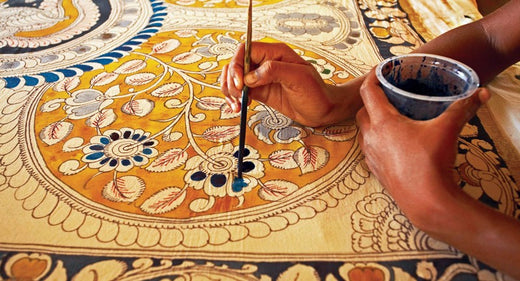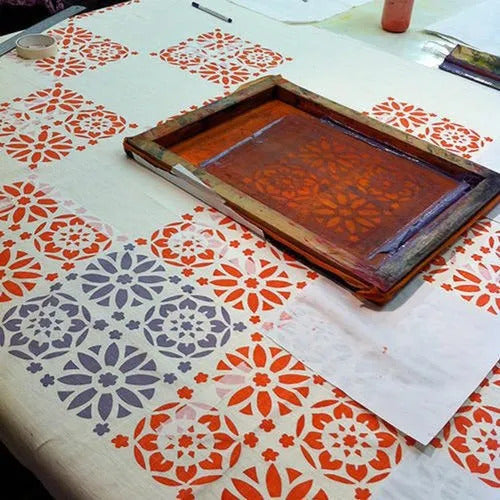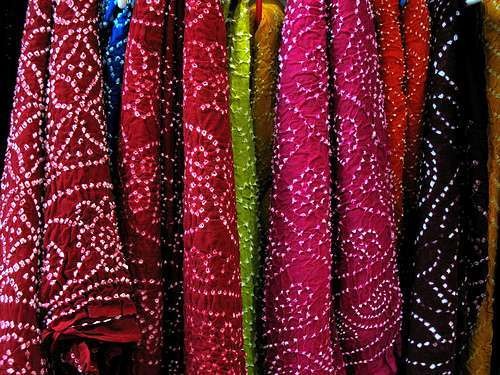
HAND PAINTED KALAMKARI
Kalamkari is an ancient style of hand painting done on cotton or silk fabric with a tamarind pen, using natural dyes. This art involves 23 tedious steps of dyeing, bleaching, hand painting, block printing, starching, cleaning and more. Motifs drawn in Kalamkari spans from flowers, peacock, paisleys to divine characters of Hindu epics like Mahabharata and Ramayana. Nowadays, this art is primarily done to create Kalamkari sarees.
Kalamkari art primarily use earthy colors like indigo, mustard, rust, black and green. Natural dyes used to paint colors in Kalamkari art is extracted for natural sources with no use of chemicals and artificial matter. For instance, craftsmen extract black color by blending jaggery, water and iron fillings which they essentially use for outlining the sketches. While mustard or yellow is derived by boiling pomegranate peels, red hues are created from bark of madder or algirin. Likewise, blue is obtained from indigo and green is derived by mixing yellow and blue together.
From the first representation of Kalamkari art as religious paintings, depicting Indian gods and goddesses to the process of gaining recognition during the reign of Mughal dynasty, and till today when Andhra Pradesh is the largest producer of Kalamkari; this art has come a long way.
In the past decade, due to the tedious technique involved in its making, Kalamkari art was losing its shine. The emergence of high on technology machine looms and printed textiles also escalated the extinction process of this art. But it was the fashion designers of the Indian fashion industry who came together to revive this art and helped artisans practicing this art in the state of Andhra Pradesh.





